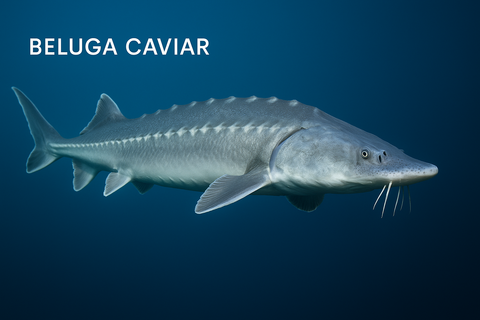General

For centuries, beluga caviar has stood at the peak of culinary indulgence—an ingredient reserved for royalty, dignitaries, and elite gourmands. Its reputation as the most sought-after caviar in the world is tied not only to its unique flavor and texture, but also to the remarkable fish from which it comes: the beluga sturgeon. Understanding the origins of beluga caviar requires a look at the ancient evolution of sturgeon, the delicate ecosystems they inhabit, and the centuries-old practices that transformed their roe into a global symbol of extravagance.

Caviar pancakes embody the modern gourmet spirit—bridging comfort food with refined indulgence. They’re a reminder that luxury doesn’t always have to be formal and that some of the best culinary creations come from daring combinations.
Whether you’re hosting an elegant brunch, celebrating a holiday, or simply exploring new flavors, caviar pancakes bring a delightful blend of creativity, texture, and sophistication to the table.

Caviar has always carried an aura of luxury, sophistication, and timeless culinary prestige. But in recent years, chefs and producers have taken a bold step into a new frontier: infused caviar. This modern twist blends the traditional elegance of fish roe with contemporary flavor-crafting techniques—unlocking an entirely new dimension of taste, aroma, and creativity. Whether you’re a seasoned connoisseur or exploring the world of roe for the first time, infused caviar offers an exciting way to experience this delicacy.

Ultimately, caviar has become popular during Christmas because it encapsulates what the holiday season represents: joy, generosity, warmth, and the celebration of life’s best moments.
From historical tradition to modern luxury, from cultural symbolism to extraordinary flavor, caviar has earned its place as a holiday superstar — a delicacy that transforms a meal into a memory.

For centuries, few foods have embodied opulence quite like caviar. Today, its shimmering pearls whisper luxury, but nowhere was its prestige more deeply rooted than in imperial Russia. Long before caviar became a global delicacy sampled in Michelin-starred dining rooms or private jet cabins, it was the pride of Russian czars — a sumptuous symbol of power, divine right, and unmatched royal splendor.

So, what fish does caviar come from? True caviar comes only from sturgeon. Beluga, Ossetra, Sevruga, and Kaluga are among the most celebrated types, each with unique textures and flavors. While roe from salmon, trout, paddlefish, or flying fish may also be marketed as caviar, they are technically not the same.

